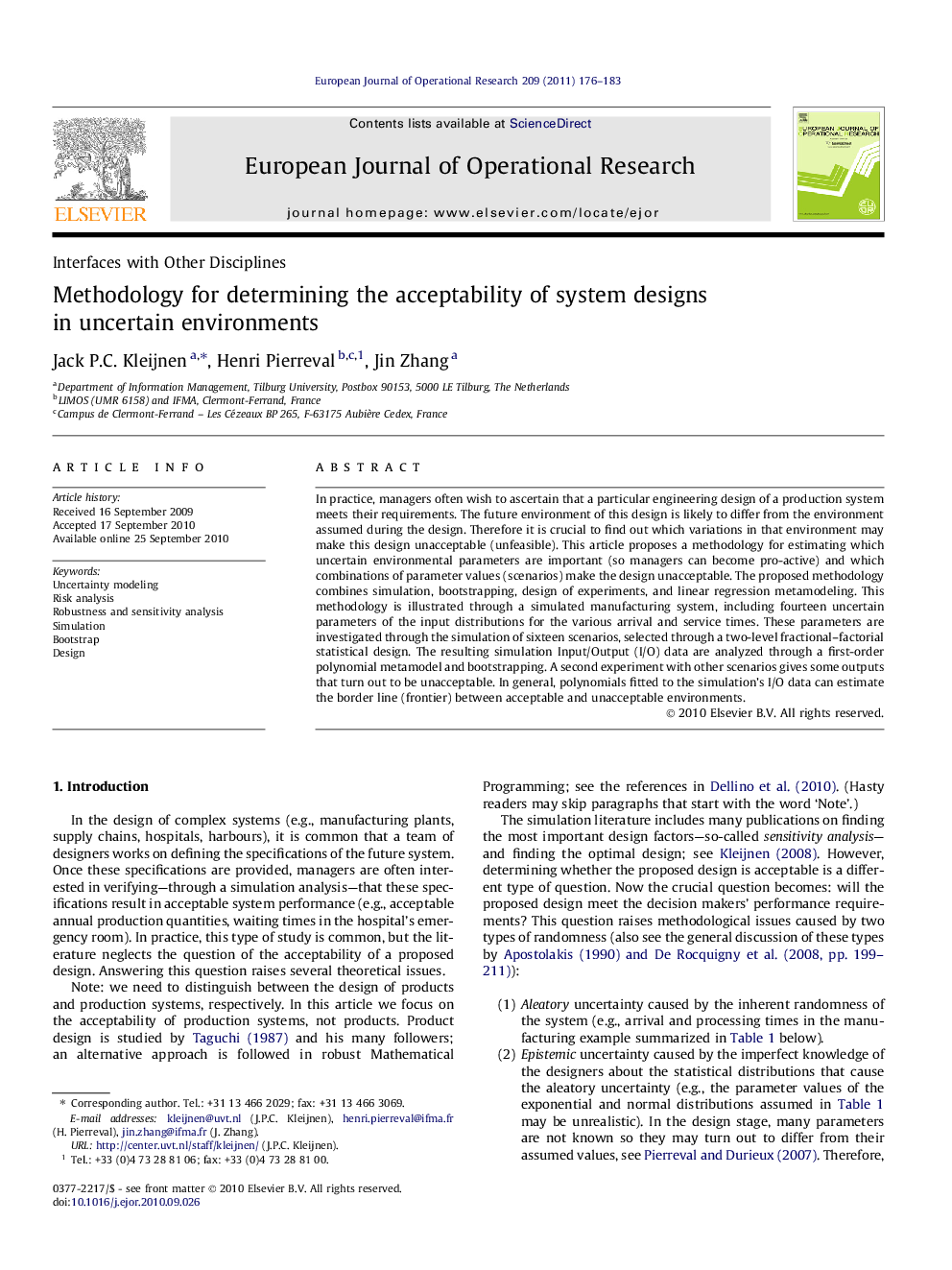| Article ID | Journal | Published Year | Pages | File Type |
|---|---|---|---|---|
| 480889 | European Journal of Operational Research | 2011 | 8 Pages |
In practice, managers often wish to ascertain that a particular engineering design of a production system meets their requirements. The future environment of this design is likely to differ from the environment assumed during the design. Therefore it is crucial to find out which variations in that environment may make this design unacceptable (unfeasible). This article proposes a methodology for estimating which uncertain environmental parameters are important (so managers can become pro-active) and which combinations of parameter values (scenarios) make the design unacceptable. The proposed methodology combines simulation, bootstrapping, design of experiments, and linear regression metamodeling. This methodology is illustrated through a simulated manufacturing system, including fourteen uncertain parameters of the input distributions for the various arrival and service times. These parameters are investigated through the simulation of sixteen scenarios, selected through a two-level fractional–factorial statistical design. The resulting simulation Input/Output (I/O) data are analyzed through a first-order polynomial metamodel and bootstrapping. A second experiment with other scenarios gives some outputs that turn out to be unacceptable. In general, polynomials fitted to the simulation’s I/O data can estimate the border line (frontier) between acceptable and unacceptable environments.
